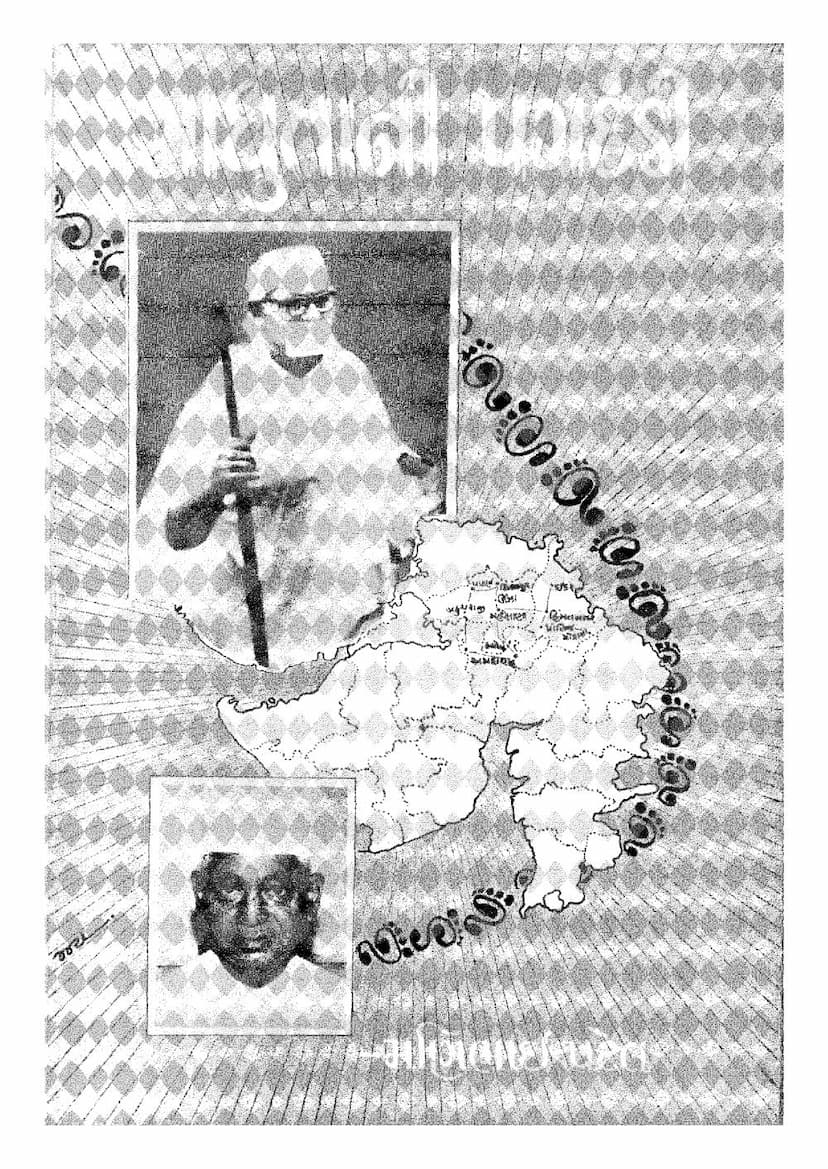Sadhuta Ni Pagdandi Part 2
Added to library: September 2, 2025

Summary
"Sadhuta ni Pagdandi Part 2" (The Path of Sainthood, Part 2) by Manilal Patel, published by Mahavir Sahitya Prakashan Mandir, Ahmedabad, is a biographical account detailing the extensive travels and social reform activities of Muni Shri Santbalji. The book is presented as a diary of his journeys and interactions, offering insights into his philosophy and impact.
The book highlights Muni Shri Santbalji's transformative approach, which departed from traditional asceticism by actively engaging in social service. He emphasized the integration of personal spiritual development (Atma Vikas) with societal upliftment (Jan Seva), believing them to be inseparable. His work, particularly the establishment of the 'Bhal Nalkantha Prayogik Sangh' in 1947, aimed to implement his insights through practical, real-world applications. This organization, supported by prominent social reformers, led to the creation of seventeen different institutions working across various sectors, embodying the ideals of Mahatma Gandhi and Vinoba Bhave.
A significant aspect of the book is Muni Shri Santbalji's unwavering commitment to Jain principles while engaging with the broader society. He maintained strict adherence to Jain practices, including his attire and outward appearance, yet he never engaged in proselytization or coercion. His influence was evident in the widespread adoption of principles like non-violence, truth, and non-stealing, even among non-Jain communities in the Bhal-Nalkantha region, demonstrating the universal appeal of his teachings.
The text also touches upon the criticisms he faced from conservative elements within the Jain community who believed that a Jain monk should not be deeply involved in worldly affairs and social service. Despite being excommunicated by some, his close relationship with his guru, Muni Shri Nanchandraji Maharaj, remained strong. Muni Shri Santbalji continued his service, enduring hardships and challenges, demonstrating that social service itself could be a path to self-realization. He viewed personal spiritual growth and societal service as intertwined, stating, "I have never felt a difference between self-development and what is called public service."
The book details his various public engagements, including a significant Chaturmas (monsoon retreat) in Viramgam in 1945. During this period, he initiated extensive sanitation drives to combat cholera and malaria, mobilising the community, including youth and elders, in cleaning the town. This initiative fostered a sense of unity, eradicated untouchability, and promoted interfaith harmony. His humility was evident when he responded to an honorific event by attributing the success to the inspiration of figures like Mahatma Gandhi.
The narrative further chronicles his tours of Saurashtra, his interactions with various communities, his establishment of farmer cooperatives to address economic disparities, and his efforts to promote communal harmony by encouraging dialogue between religious leaders of different faiths. A poignant incident described is the transformation of "Vahan Pagi," a notorious dacoit, who, inspired by Muni Shri Santbalji's dedication and compassion, renounced his criminal ways and pledged to live a virtuous life.
The book also includes a section of Q&A, addressing various aspects of life, ethics, and societal issues, reflecting Muni Shri Santbalji's deep philosophical understanding and his ability to connect with people from all walks of life. His views on the interconnectedness of all beings, the importance of righteous conduct in all spheres of life, and the need for continuous self-improvement are emphasized.
"Sadhuta ni Pagdandi Part 2" serves as a testament to Muni Shri Santbalji's revolutionary thinking and his practical approach to spiritual and social reform, offering a valuable record of his impactful journey and the profound influence he had on the society of his time.